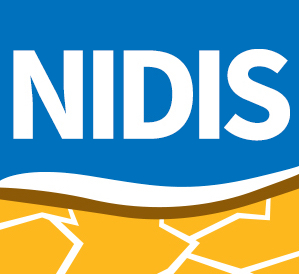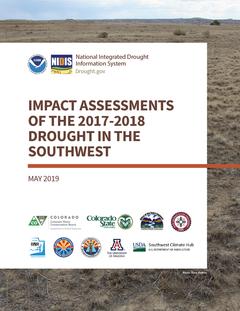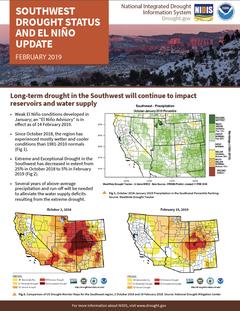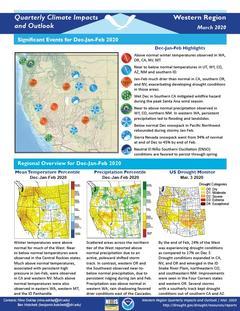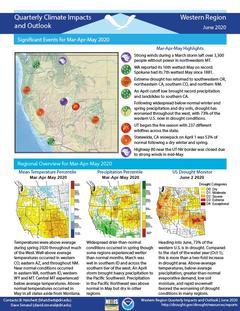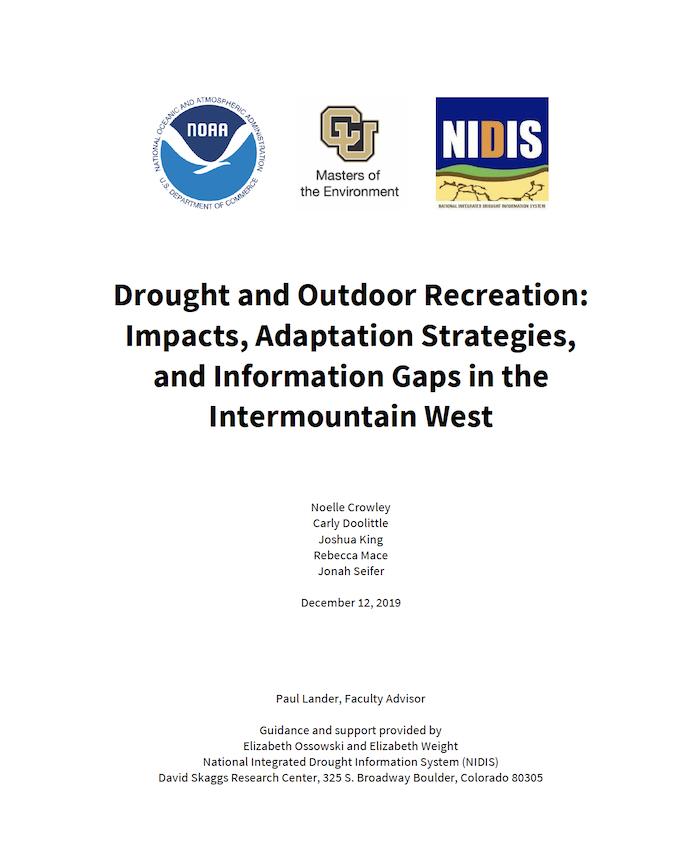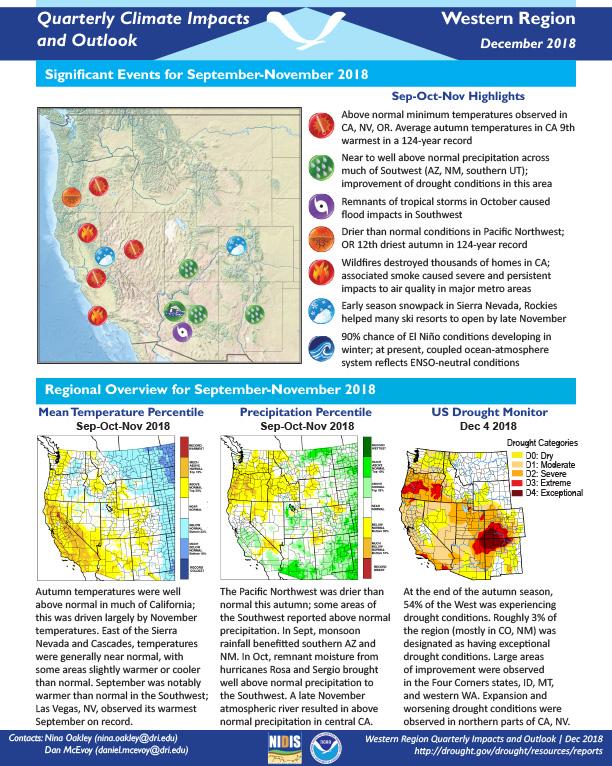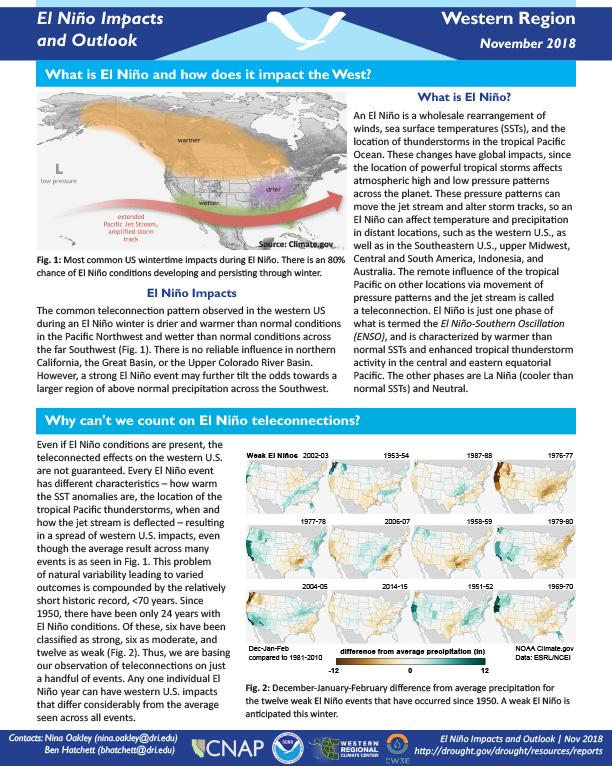Background: The 2017-2018 Drought in the Southwest
According to the U.S. Drought Monitor’s drought severity designations, “Abnormally Dry” conditions crept into the Southwest region in October 2017 and deepened into widespread “Moderate Drought” in November 2017. The region was in “Severe Drought” by January 2018; “Extreme Drought” by March 2018; and “Exceptional Drought” by May 2018. The “Exceptional Drought” lingered in the region until January 2019. In 2018, the region experienced more than 45 weeks in drought.
Quarterly Climate Impacts and Outlook for the Western Region for December 2018 – February 2019. Dated March 2019.
Persistent stormy conditions helped to maintain near-to-below normal temperatures across much of the West this winter. Abundant precipitation and moderate temperatures helped alleviate drought conditions in large areas of the West.
Long-term drought in the Southwest will continue to impact reservoirs and water supply
- Weak El Niño conditions developed in January; an “El Niño Advisory” is in effect as of 14 February 2019.
- Since October 2018, the region has experienced mostly wetter and cooler conditions than 1981-2010 normals (Fig 1).
- Extreme and Exceptional Drought in the Southwest has decreased in extent from 25% in October 2018 to 5% in February 2019 (Fig 2).
- Several years of above-average precipitation and run-off will be needed to alleviate the water supply deficits r
Quarterly Climate Impacts and Outlook for the Western Region for December 2019 – February 2020. Dated March 2020.
Winter temperatures were above normal for much of the West. Near to below normal temperatures were observed in the Central Rockies states. Scattered areas across the northern tier of the West reported above normal precipitation due to an active, poleward shifted storm track. In contrast, western Oregon and the Southwest observed near-to-below normal precipitation, due to persistent ridging during January and February.
Quarterly Climate Impacts and Outlook for the Western Region for March – May 2020. Dated June 2020.
Temperatures were above average during spring 2020 throughout much of the West. Widespread drier-than-normal conditions occurred in spring though some regions experienced wetter than normal months.
Outdoor recreation is a major contributor to the Intermountain West’s economy, but the future viability of many businesses—particularly small businesses—in the industry is threatened by their drought vulnerabilities and the region’s projected increases in drought severity and frequency.
Quarterly Climate Impacts and Outlook for the Western Region for September – November 2018. Dated December 2018.
Above normal minimum temperatures were observed in California, Nevada, and Oregon. Near to well above normal precipitation was observed across much of the Southwest (Arizona, New Mexico, and southern UT) with an improvement of drought conditions in this area.
Provides a definition of El Nino; potential winter impacts; the outlook for winter temperatures and precipitation; and a look back at previous El Nino winters.
NOAA’s Regional Climate Services Program created these Outlooks to inform the public about climate impacts within their respective regions. Each regional report contains easy-to-understand language, and anyone can access them through the Drought Portal at https://www.drought.gov/drought/resources/reports.

